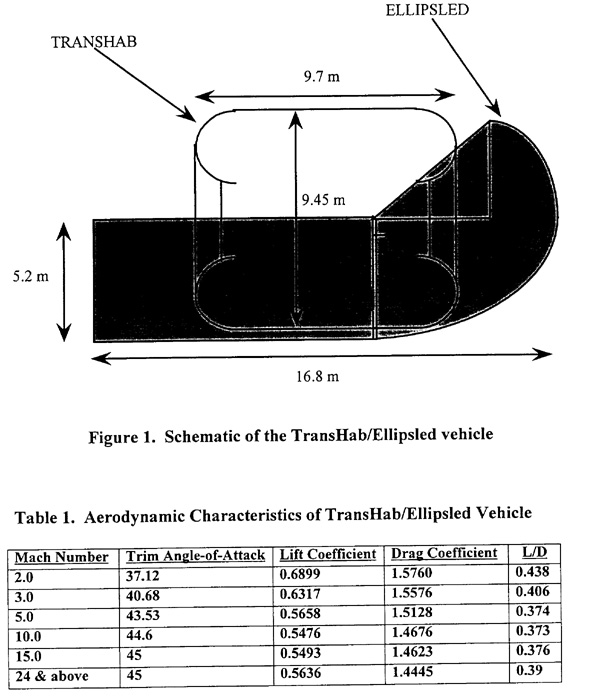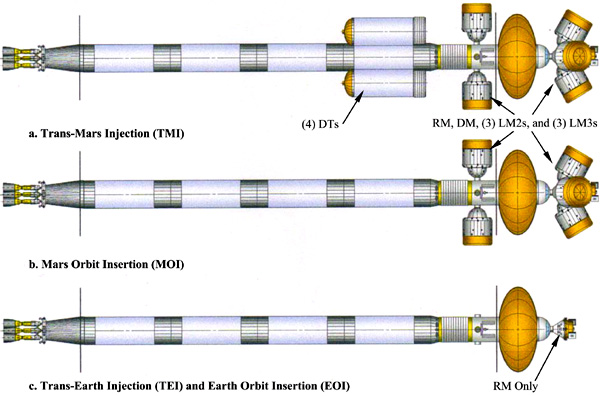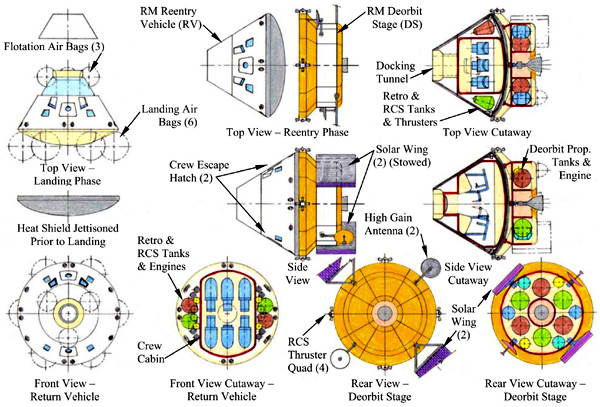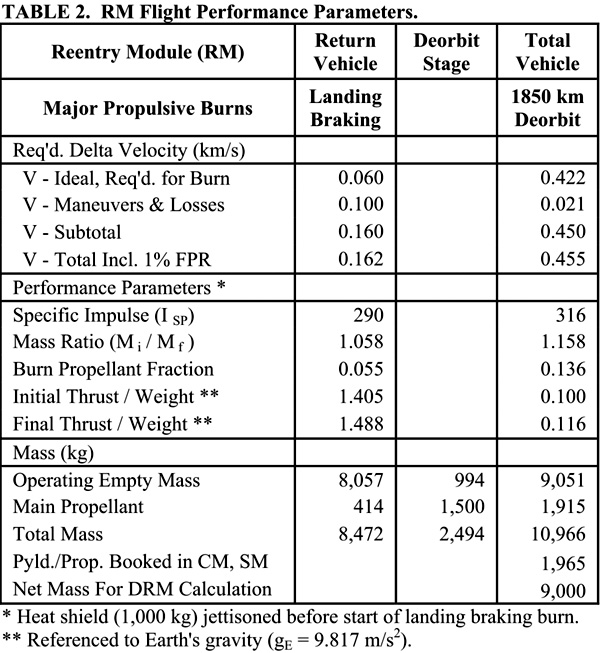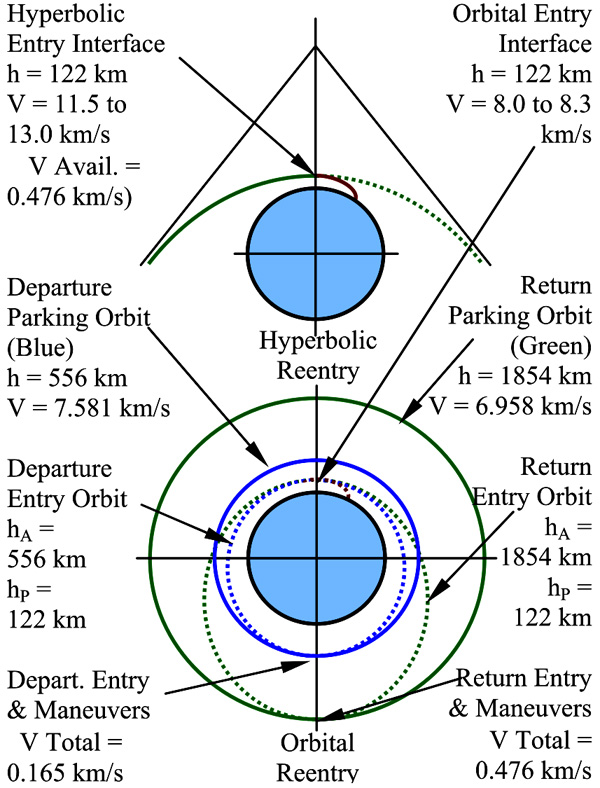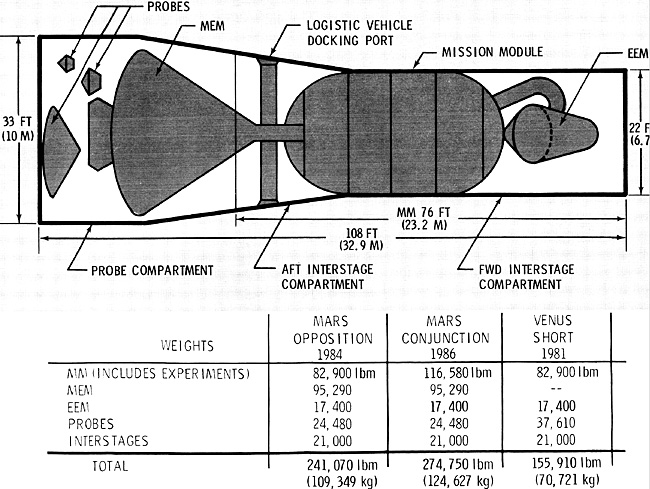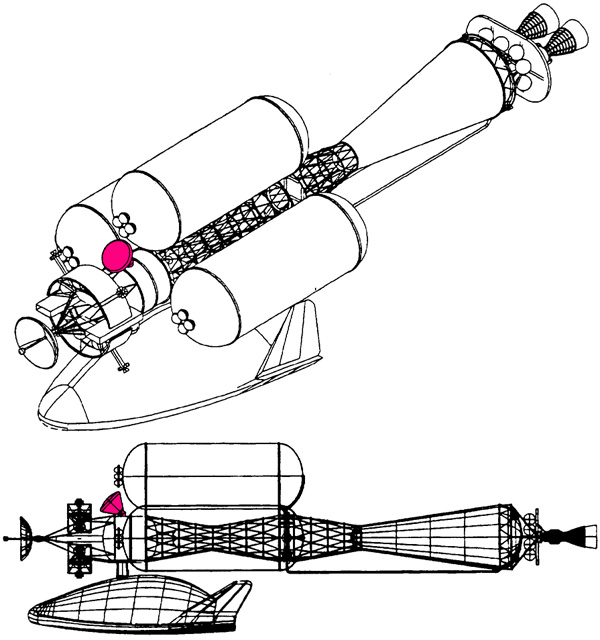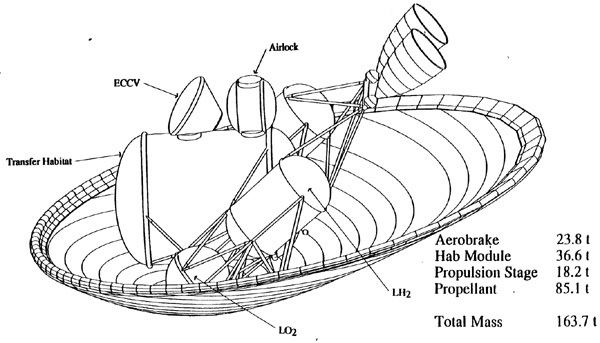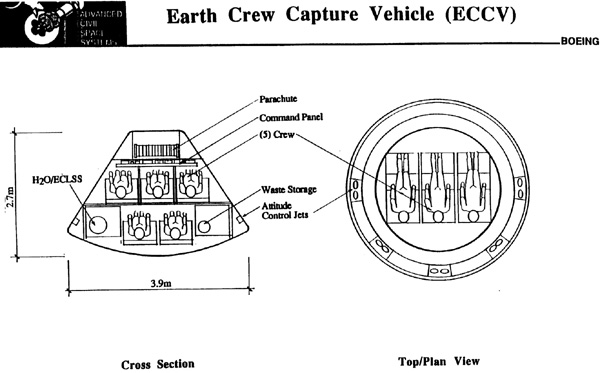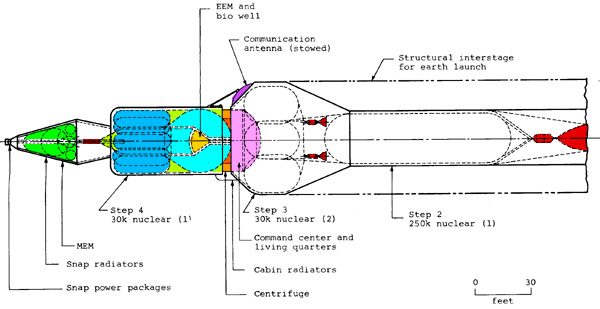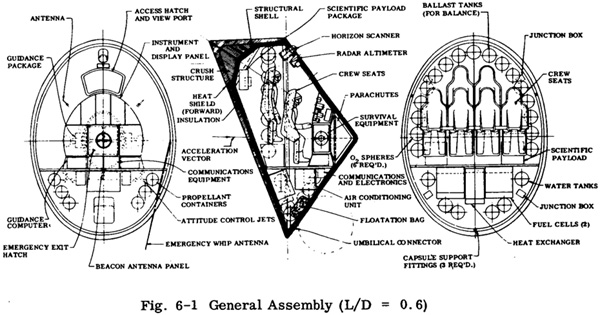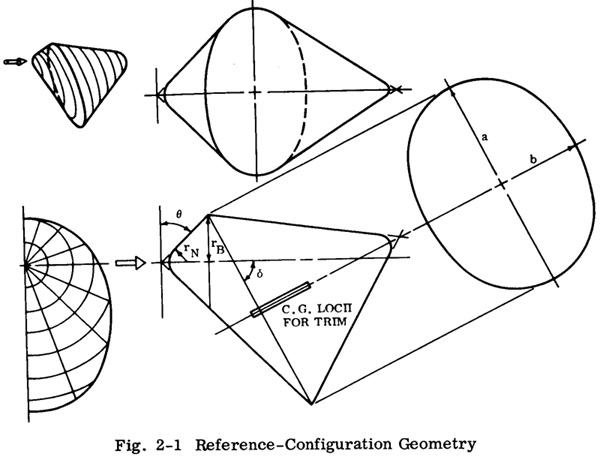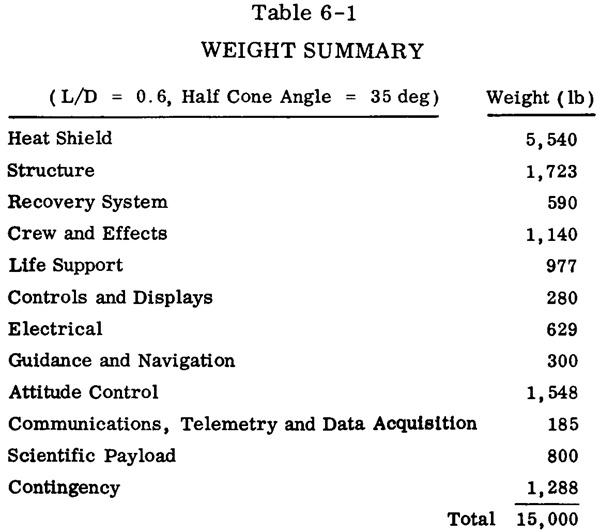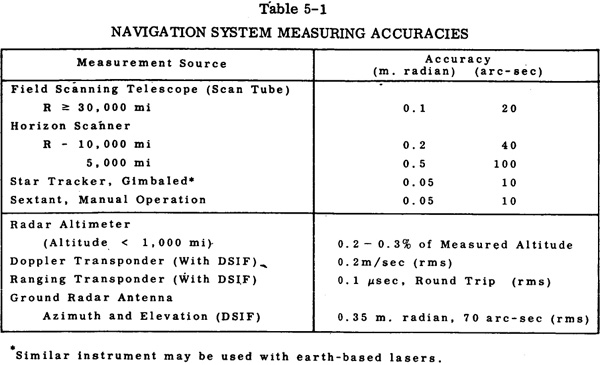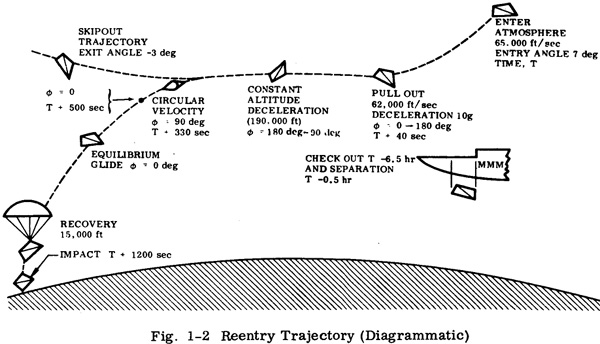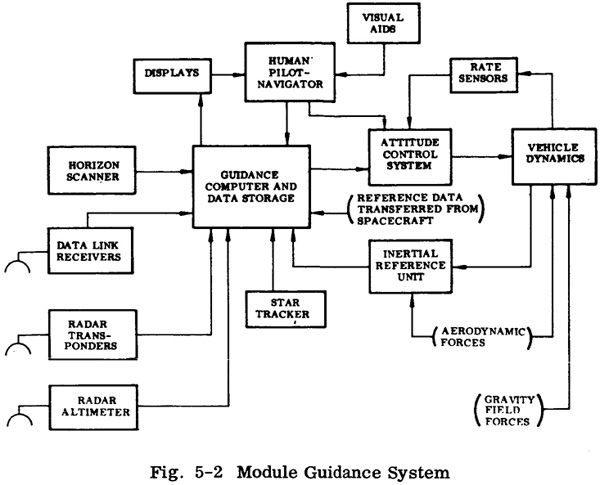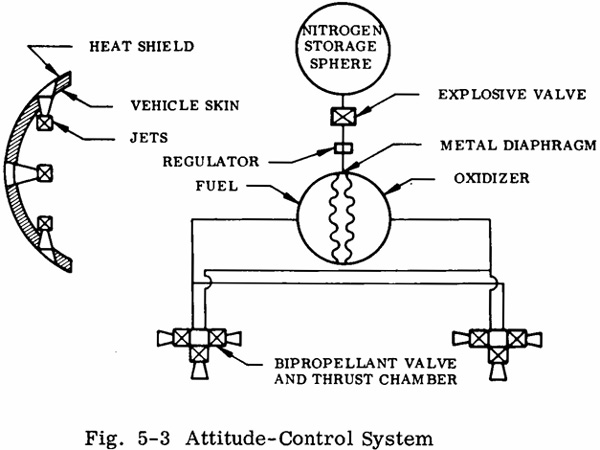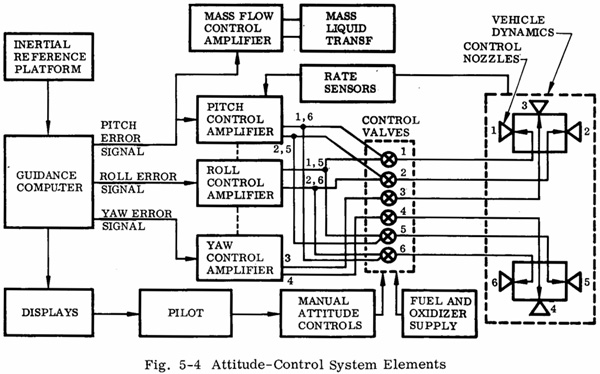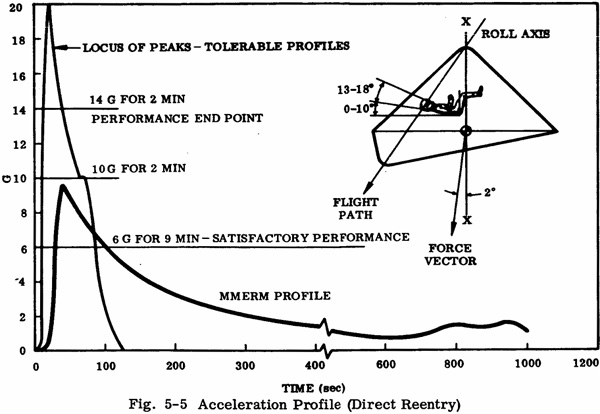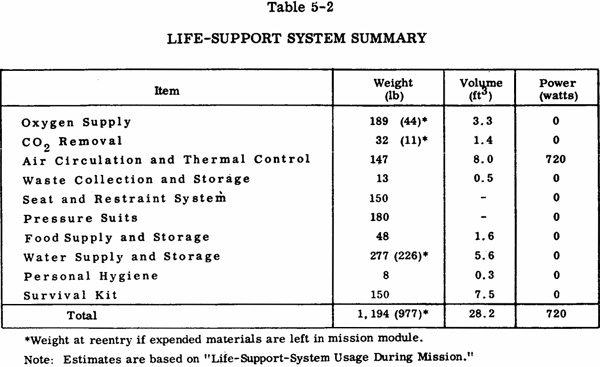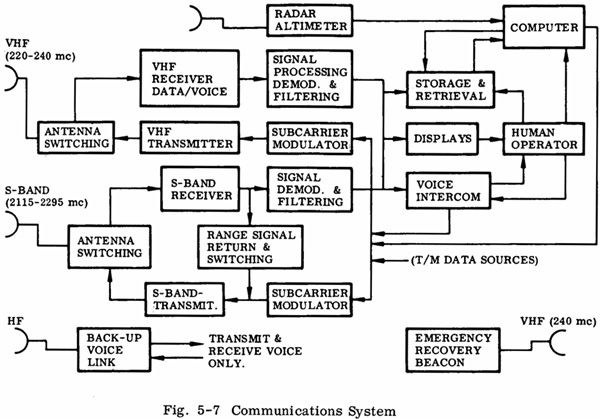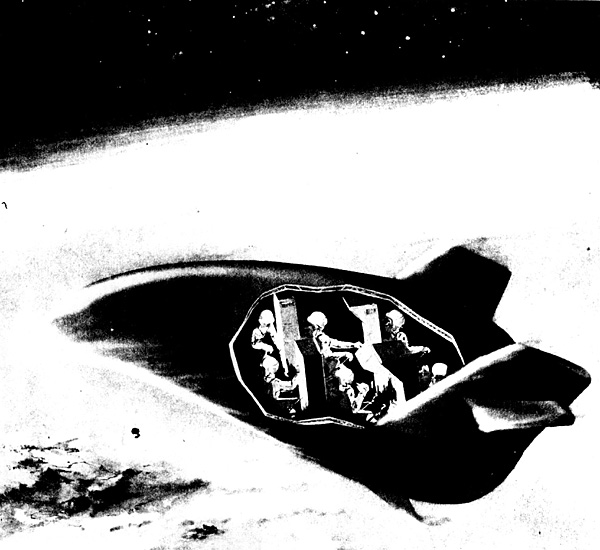
Earth-return vehicle for Aeronutronic's version of the EMPIRE Mars mission
Introduction
![]() Many of the Mars Mission designs have difficulty making enough delta-V to complete the mission, especially if they are chemically powered. A common short-cut is to economize in the return to Terra, the "Earth-Return" segment of the mission.
Many of the Mars Mission designs have difficulty making enough delta-V to complete the mission, especially if they are chemically powered. A common short-cut is to economize in the return to Terra, the "Earth-Return" segment of the mission.
The expensive option is for the returning spacecraft to brake their velocity and enter Terra orbit. The crew can be taken off the ship by a space shuttle or something, and the ship can be refurbished for re-use.
The short-cut cheapskate option is to not bother braking the spacecraft. Instead as the ship approaches Terra, the crew bail out in a tiny Earth-Return Vehicle (along with any Mars samples they brought) and use free aerobraking to return the crew to Terra. The multi-billon dollar spaceship is abandoned to go zipping off into an eccentric heliocentric junkyard orbit.
In theory a designer could use individual reentry capsules instead of a single Earth-Return vehicle, but they'd have to be really hard up for delta-V to economize that much. Plus most reentry capsules are only rated to aerobrake the relatively modest amounts of Terra orbital velocities, not return-from-Mars velocities.
Aerobraking Transhab
![]() This hair-raising concept is from Earth Return Aerocapture for the TransHab/Ellipsled Vehicle
This hair-raising concept is from Earth Return Aerocapture for the TransHab/Ellipsled Vehicle
A TransHab is a species of inflatable habitat module. Basically a huge balloon used as living quarters for a crew of six.
Aerocapture is a powerful technique for drastically reducing the required delta V and propellant load for your spacecraft, which is so important for those delta-V challenged chemical rockets. Just send your spacecraft on a hot ride through the planet's atmosphere and you can literally burn off enough delta-V for free. Assuming your heat shield lasts long enough.
However, doing that with a TransHab perched on your spacecraft's nose seems like the height of insanity. Sort of like waving an oxyacetylene torch over a birthday balloon. One large POP! and lots of sad astronaut corpses burning up in reentry.
But the handsome propellant savings from aerocapture are so alluring that some NASA researchers did a study. This would be incredibly useful, especially if you want to reuse the spacecraft for several Mars missions or something. They came up with an aeroshell covering the impact side of the TransHab, dubbed the "Ellipsled" due to its shape.
The Ellipsled has a mass of 3929 kg, while the TransHab in the study was assumed to be 14,522 kg. They also assumed the rest of the vehicle had a mass of 7053 kg, presumably most of the propellant had been already burnt. Total of 25,500 kg. I am unsure from reading the report but I get the impression this represents the TransHab detaching from the rest of the spacecraft, carrying along only the ellipsled and a small rocket engine for change-of-plane maneuvers. Meaning the rest of the spacecraft goes sailing off into the wild black yonder as the TransHab aerocaptures into Terran orbit. The report mentions the TransHab being mated to a new spacecraft for a new Mars mission.
The thing has a lift-to-drag ratio of 0.39 at Mach 24 and above, which is better than the Apollo capsule's 0.3. So it is slightly more maneuverable. The deceleration limit is 5.0 g.
They were aiming for something that could approach Terra at the end of the Mars mission and aerocapture into a 420 kilometer orbit by burning off about 4.3 km/s of velocity. If one wanted to get fancy, it is much easier to brake into a high elliptical parking orbit with periapsis of 407 km and an apoapsis of 120,000 km. Yes it makes it more difficult to refurbuish the TransHab and attach it to a new propulsion bus for a new mission, but it really cuts down on the required trans-Mars injection delta V.
Austin Mars Mission
![]() This is from the Austin Mars Mission
This is from the Austin Mars Mission
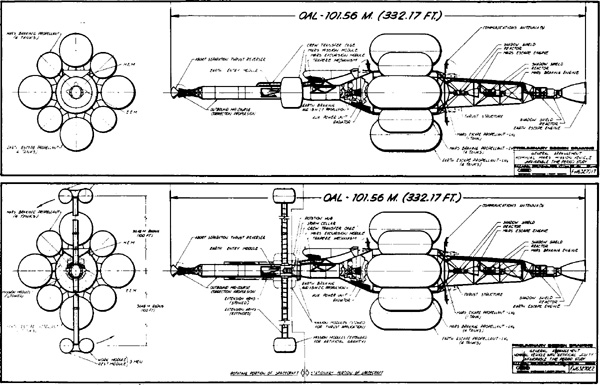
Earth Entry Module is located just forwards of the Mars Mission Modules
Topmost is basic spacecraft
Bottommost is variant design where front section spins for artificial gravity
click for larger image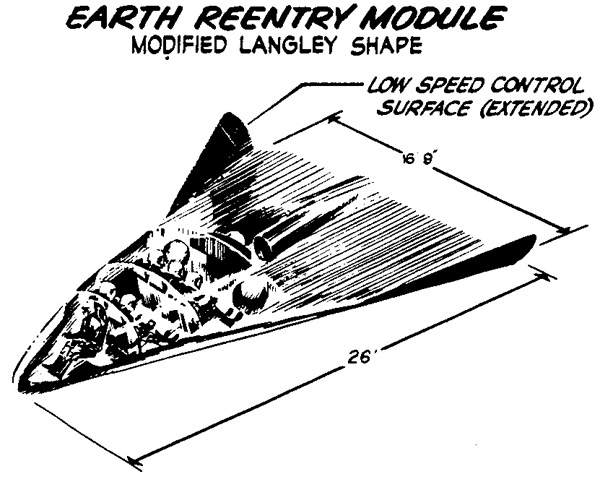
Benton Spaceship Discovery RM
Boeing IMIS EEM
![]() This is from the Boeing IMIS
This is from the Boeing IMIS
Boeing STCAEM Mars NTR 2 CRV
![]() This is from Boeing STCAEM Mars NTR 2. Crew Return Vehicle (CRV) has a mass of 5.8 metric tons.
This is from Boeing STCAEM Mars NTR 2. Crew Return Vehicle (CRV) has a mass of 5.8 metric tons.
Boeing STCAEM Cryo/Aerobrake ECCV
![]() This is from Boeing STCAEM Cryo/Aerobrake. Earth Crew Capture Vehicle (ECCV) carries a crew of 4 and has a mass of 7 metric tons.
This is from Boeing STCAEM Cryo/Aerobrake. Earth Crew Capture Vehicle (ECCV) carries a crew of 4 and has a mass of 7 metric tons.
Douglas Mars EEM
![]() This is from Douglas Mars. Earth Entry Module (EEM) carries a crew of 6 and has a mass of 5.92 metric tons.
This is from Douglas Mars. Earth Entry Module (EEM) carries a crew of 6 and has a mass of 5.92 metric tons.
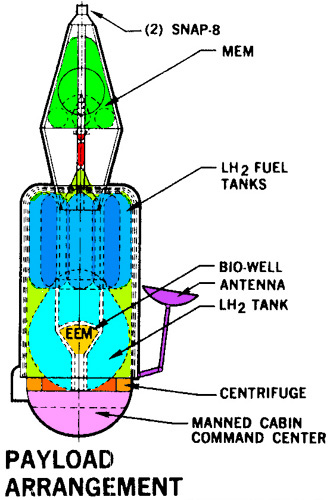
click for larger image 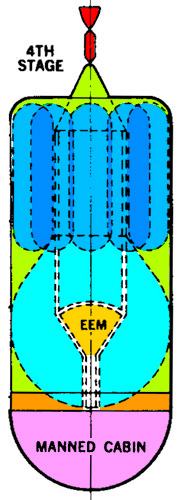
FOURTH STAGE 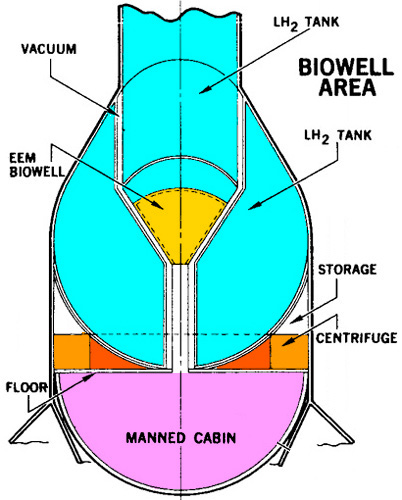
BIOWELL aka the "Storm Cellar"
Basically the biowell is the Earth Entry Module surrounded by liquid hydrogen tanks. It protects the crew from radiation in case of a solar proton storm
click for larger image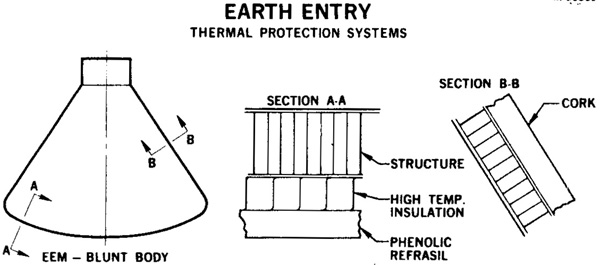
EEM
Earth Entry Module, with heat shield on base for Earth reentry
Lockheed Mars ERM
![]() This is from Proceeding of the Symposium on Manned Planetary Missions 1963/1964 Status, Part
13 Preliminary Design of a Mars-Mission Earth Reentry Module, p 525.
This is from Proceeding of the Symposium on Manned Planetary Missions 1963/1964 Status, Part
13 Preliminary Design of a Mars-Mission Earth Reentry Module, p 525.
The study was to design a reentry vehicle to allow the crew from a Mars mission to return to Terra. Meaning that it was impractical to design the mission spacecraft with enough delta-V to enter low Earth orbit at the conclusion of the mission, so as it goes screaming by Terra the crew bails out in the reentry vehicle while the abandoned spacecraft proper goes sailing off into an eccentric heliocentric orbit.
- Intended for a manned Mars mission departing in the years 1971, 1973, or 1975
- Terra reentry speeds in the range of 45,000 ft/sec to 65,000 ft/sec (14,000 m/s to 20,000 m/s)
- Reentry module is not used during mission (except for checkouts of system and components), so study is only responsible for phase starting at separation and ending with ground landing
- No retro-propulsion to be used
- Maximum deceleration of 10 g
- Abort mode to be considered in structural design
- Normal crew: four, emergency crew: six.
- Land or sea recovery, 3 day survival capacity
- Target weight 15,000 lb (6,800 kg)
Lift-to-drag ratio (L/D) is the amount of lift generated by a vehicle, divided by the aerodynamic drag it creates by moving through the air. It tells you if your aircraft has the glide capacity of a brick. The final design focused on a Reentry Module with L/D = 0.6
In the side view you can see the astronauts in profile. Their backs are aimed in the direction the module flies, so they experience a more comfortable eyeballs-in deceleration instead of a choking eyeballs-out deceleration. In other words, you feel like you are lying on your back in bed, instead of being duct-taped to the ceiling facing downward.
The module is in the shape of two cones, attached base-to-base. The rear cone (the one the astronauts are facing) has the point centered over the base. The forecone (the other side, the cone with the reentry heat shield) has the point skewed way up toward the astronaut's heads. Since the forecone is so skewed, inside the module all the heavy equipment has to be placed near the astronaut's feet to ensure that the center of gravity is actually at the center. Otherwise the blasted module will spin like a flipped coin and burn up in reentry, and the astronaut's spouses will make sure the module engineer's demise is long and agonizing.
The two module pilots are placed in the two aft-most acceleration couches, in easy reach of the control panels. The two non-pilot crew are arranged directly "behind" the pilots (i.e., behind the pilot's backs but closer to the travel direction of the module). The module can accomodate six crew in emergencies, the extra two are placed on either side of the pilots. The pilots have view ports to look through, the glass will be safely away from the high temperature aerobraking plumes.
The recovery parachutes are stored in the aft conical tip. The tip is ejected at chute deployment. Floatation bags ensure the module does not capsize if it lands in the ocean.
The module has an internal volume of 500 ft3 (14.2 m3), enough for the structure, equipment, and crew. The two cones have a base with a major axis of 181 inches (4.6 m) and a minor axis of 132 inches (3.4 m). The forecone half-angle is 35° (i.e., θ is 90° - 35° = 55°).
Including the contingency mass, the weight summary comes in at the target weight of 15,000 lb (6,800 kg).
In the Earth-Approach Phase, the entire spacecraft (Mars Mission Module or MMM) is maneuvered into the reentry corridor. It navigates using angles between points on Terra, Luna, and stellar references. Range is determined by stadiametric range-finding. In theory there is navigation data available from Terra-based tracking stations. But it is important for the crew to be able of navigating the ship without any help from the ground. The ship's radio may be damaged, or the tracking stations might be off-line due to global thermonuclear war, a zombie apocalypse, or something like that. The reentry module's stellar-inertial guidance system is erected.
Once the spacecraft is in the reentry corridor, the crew enters the reentry module and jettisons it from the spacecraft. The module delivers the crew to Terra's surface, while the spacecraft burns up in reentry or goes sailing off into the big dark.
During the post-separation vacuum phase, there is no propulsion available for corse corrections. So the only navigation is determining the local vertical for attitude reference and flight-angle determination (from monitoring the radar altimeter) to establish the required roll angle. Both the on-board computer and stellar-inertial guidance system are used.
During atmospheric reentry, navigation will be performed by the inertial equipment and the computer (I'm not sure if the pilots can actually perform any piloting). A closed-loop system is required, and a fast predictive technique that uses measured state variables (such as acceleration history) is necessary to maintain corridor, particularly at the higher speeds. Translation: a human pilot is nowhere near fast enough to guide the reentry module, its all under computer control.
The attitude-control system does three things. During the vacuum phase the reentry module has to be positioned so sensors can acquire their targets. Just before reentry the reentry module has to be positioned in the correct vehicle attitude. In atmospheric flight, the direction of the lift vector will be controlled by rolling the vehicle around the velocity vector. A movable mass will be used to correct excursions in pitch and yaw, with the reaction control providing refinement and damping.
The reaction jets are fueled the tried-and-true combo of nitrogen tetroxide and monomethylhydrazine (NTO + MMH). The jets are located in the aft cone as far forwards as possible without causing flow interference on the forecone.
The control system elements are shown in Fig. 5-4. The total propulsion system weight is approximately 1,000 lbs (450 kg). 500 lbs (225 kg) of fluid are required for center-of-gravity control.
The acceleration-protection system has to keep the crew from being squished like a bug during acceleration and when the reenty module hits the ground or ocean. The acceleration couches are contoured and have an extensive restraint system (seat-belts). The couches have built in shock absorbers and the forecone has a crushable nose structure to help alleviate impact deceleration.
